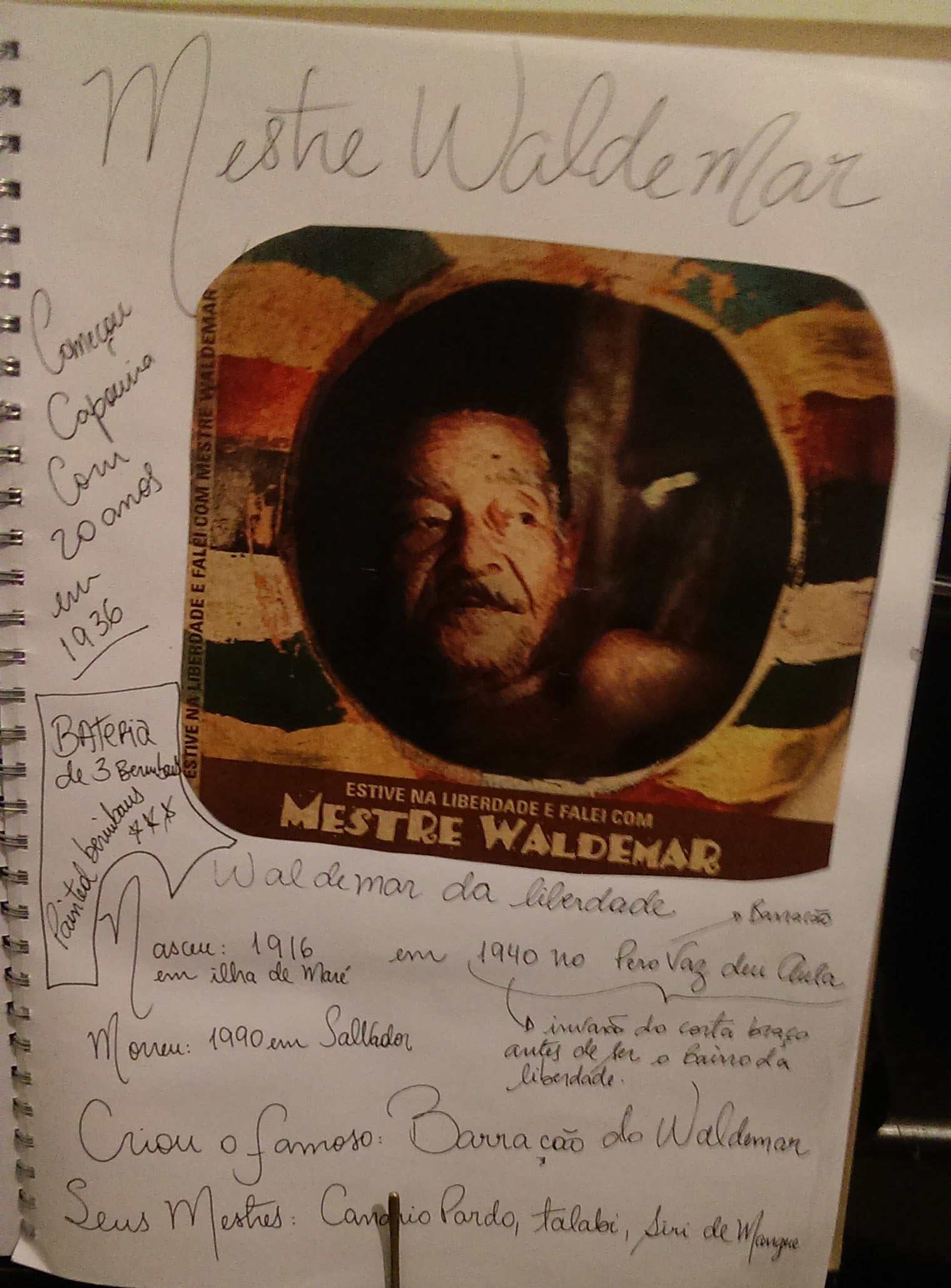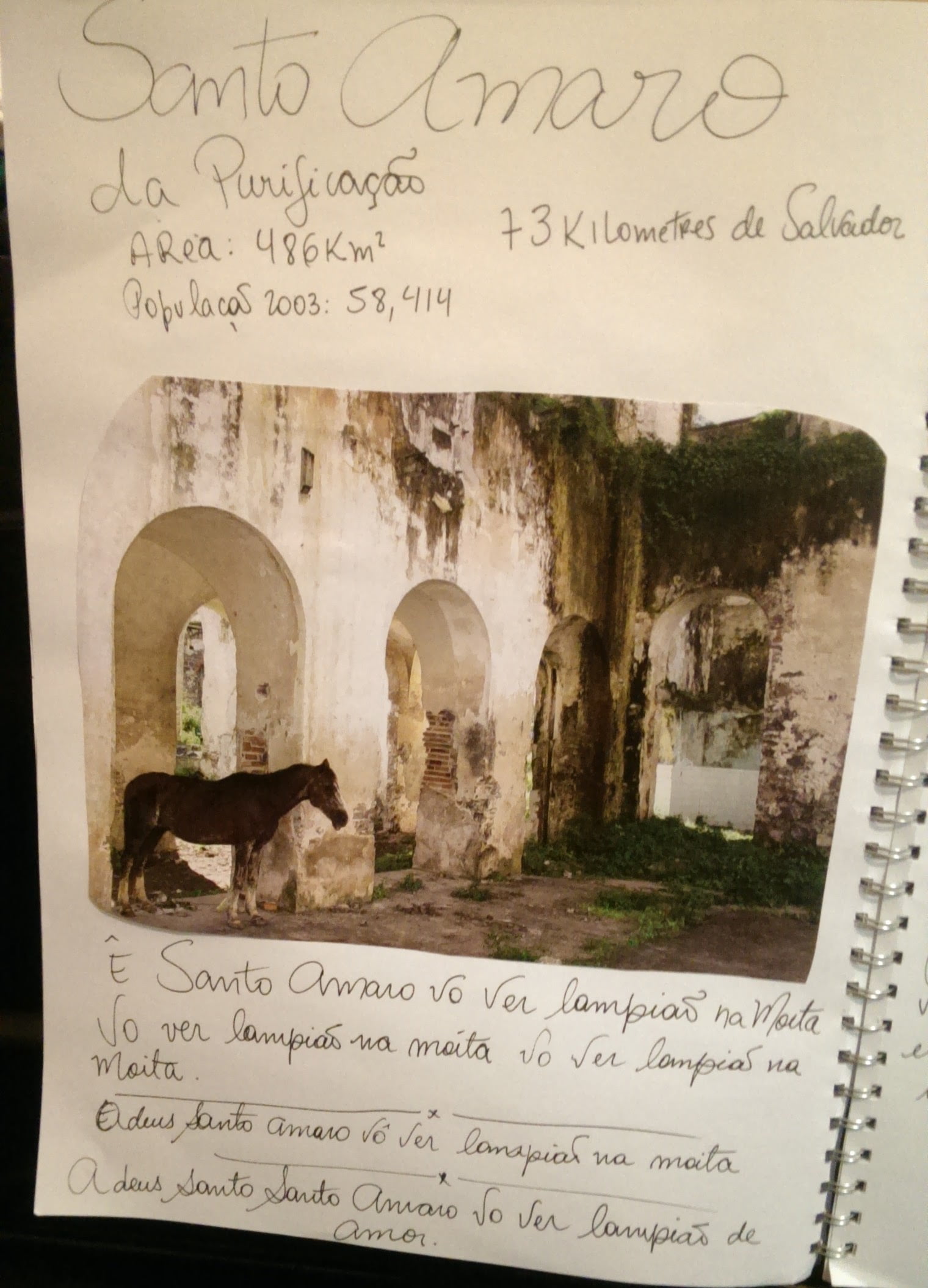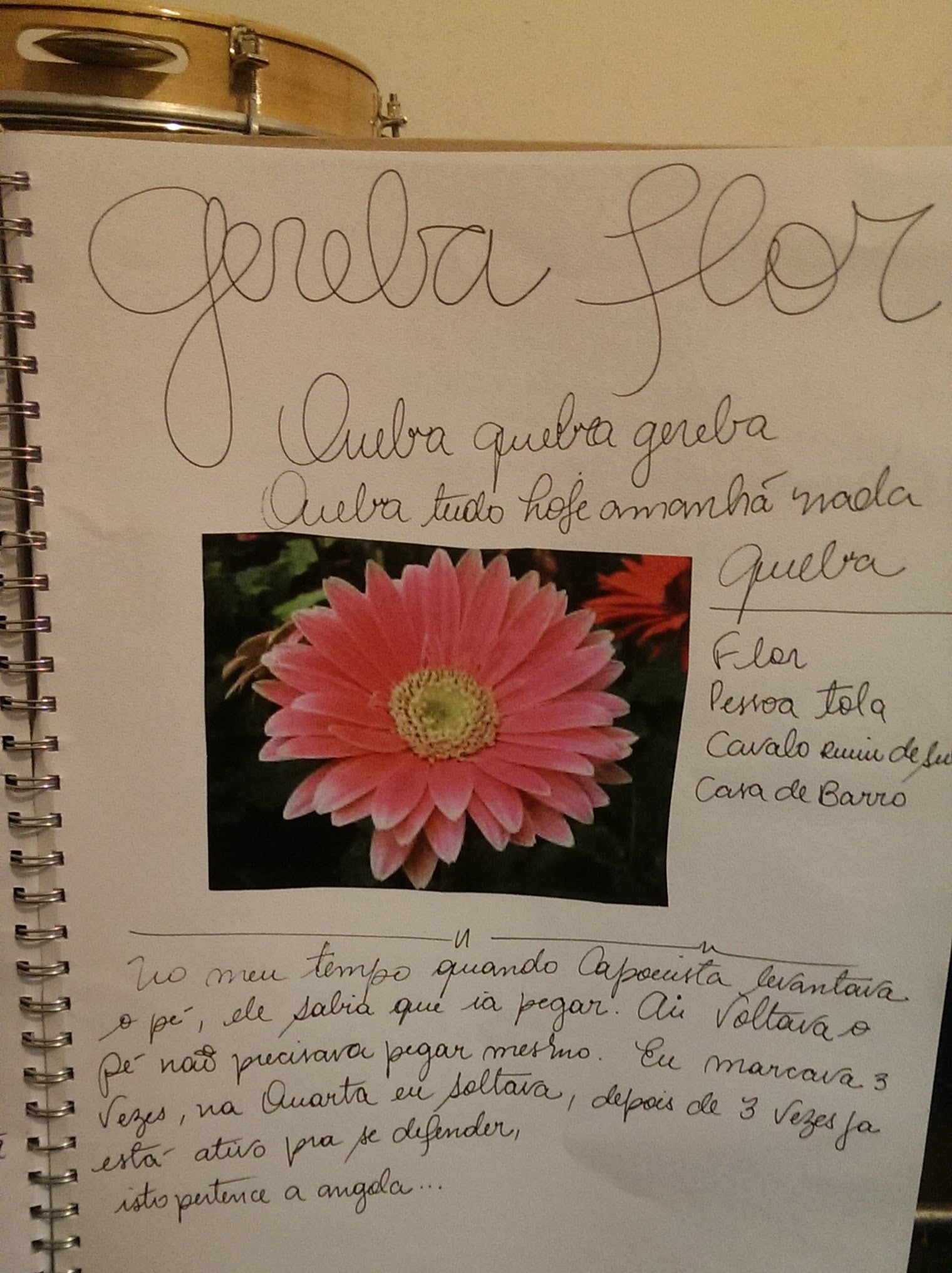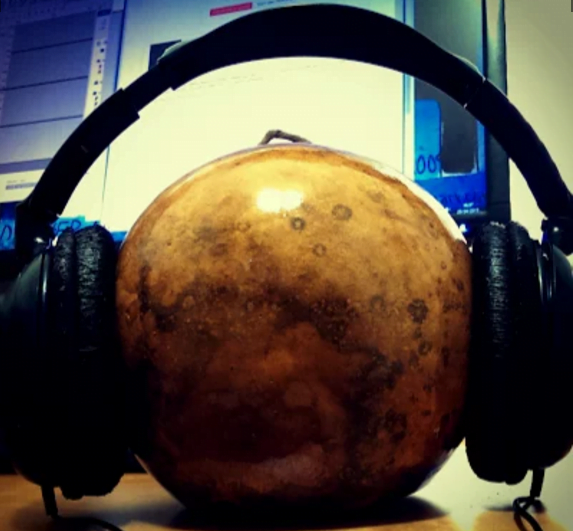Mojubá Music Lesson – 16 April 2015
We practiced this São Bento Grande repique, amongst other things:
tsh#tsh# dim dom dom x2
tsh#tsh# dim dom
dom# dom dom dom dim dom dom
dom dim dom dom
I was on the berimbau tonight, but I filmed this to practice the pandeiro at home
We continued learning about Mestre Waldemar da Liberdade – from Mestre Poncianinho’s amazing technicolor notebook
CD Estive na Liberdade e Falei com Mestre Waldemar (YouTube) – Audio interview with Mestre Waldemar
Waldemar is rumoured to have started tradition of painting berimbaus, as well as the now traditional three berimbau lineup! He created the famous Barracão de Waldemar, which inspired many songs as well as the name of the group we are a part of Barracão da Capoeira.

Santo Amaro is a famous place, 70km from Salvador. Many mestres like to give interviews here, while horses wander by… Under the photo, three versions of ‘Adeus Santo Amaro’ – another common verse: “Vou ver Lampião já vou”

Gereba has various meanings: flower, foolish person, untamable horse, mud hut. When ‘Quebra Gereba’ is played in the roda, take it to mean: ‘give it all, the time is now! Play your best!’. When Mestre was younger if that song played it would mean someone was going to end in hospital, or with some bump or another! And because there were no ice packs back then, the injured would end up with their head under the cold tap water 🙂 remember this from ‘Only the Strong’?

Songs: ai ai ai Aquindereis and Marimbondo Marimbondo Pelo sinal – A couple of more songs to practice. ‘Marimbondo’ = wasp – ‘pelo sinal’ in this context means you are marking someone – the target area, and then you know where to sting them.

Leave a Reply